Battle of Hastings – England’s Last Invasion
The peaceful and bucolic scene above disguises the fact that on October 14, 1066 the most important and decisive battle ever fought on English soil happened right here – the Battle of Hastings. It was the final successful invasion of this storied island and marked the end of the Anglo-Saxon rule that Alfred the Great had cobbled together almost two hundred years earlier. The invasion’s leader, William the Conqueror has gone down in history as one of the realm’s great kings, not only because of his success at the Battle of Hastings, but because of how he forever changed the face of England after the invasion. Won’t you join me on a tour of the area where the Battle of Hastings was fought?
Liberation Tours – Medieval Britain
Liberation Tours is a small tour company based in rural Ontario that specializes in developing military history tours for Canadians. This is my third trip with them and if you have read any of the approximately two dozen posts I have written on the first two trips, you will know they are very, very good at what they do. If you haven’t, here’s a sample – 10 Reasons I loved the 2015 tour of WWI and WWII sites in Western Europe. In 2016 we visited Italy and followed the Canadian forces in WWII from Sicily to Venice. Here’s a story on the great Canadian victory at Ortona.
The tour I’m on now with Alison, my sister Anne and our frequent traveling partners Robert and Janet Purdy is a bit different for Liberation Tours. It’s entitled Medieval Britain: Castles, Cannons & Crowns and its focus is on the history of Britain from the fall of Rome until the end of the Napoleonic Wars, but with a heavy concentration on events in what is usually referred to as the Middle Ages. This is a tour that should appeal to just about anyone. What Canadian boy didn’t grow up playing with toy soldiers, duelling with wooden swords or pretending to be Robin Hood or King Arthur? What Canadian girls dreamed of, I don’t pretend to know, but there are more women than men on the tour so there must be some attraction.
The tour leader and historian is thespian cum businessman Phil Craig who researches, writes and presents relevant topics on an amazingly variety of subjects. We are really looking forward to what he has come up with for this tour.

The tour itself is conducted through Trafalgar Tours which has been doing this for 75 years or so. For the third trip in a row we have the very affable, knowledgable and cool under fire Mark Gascoigne as our tour manager.
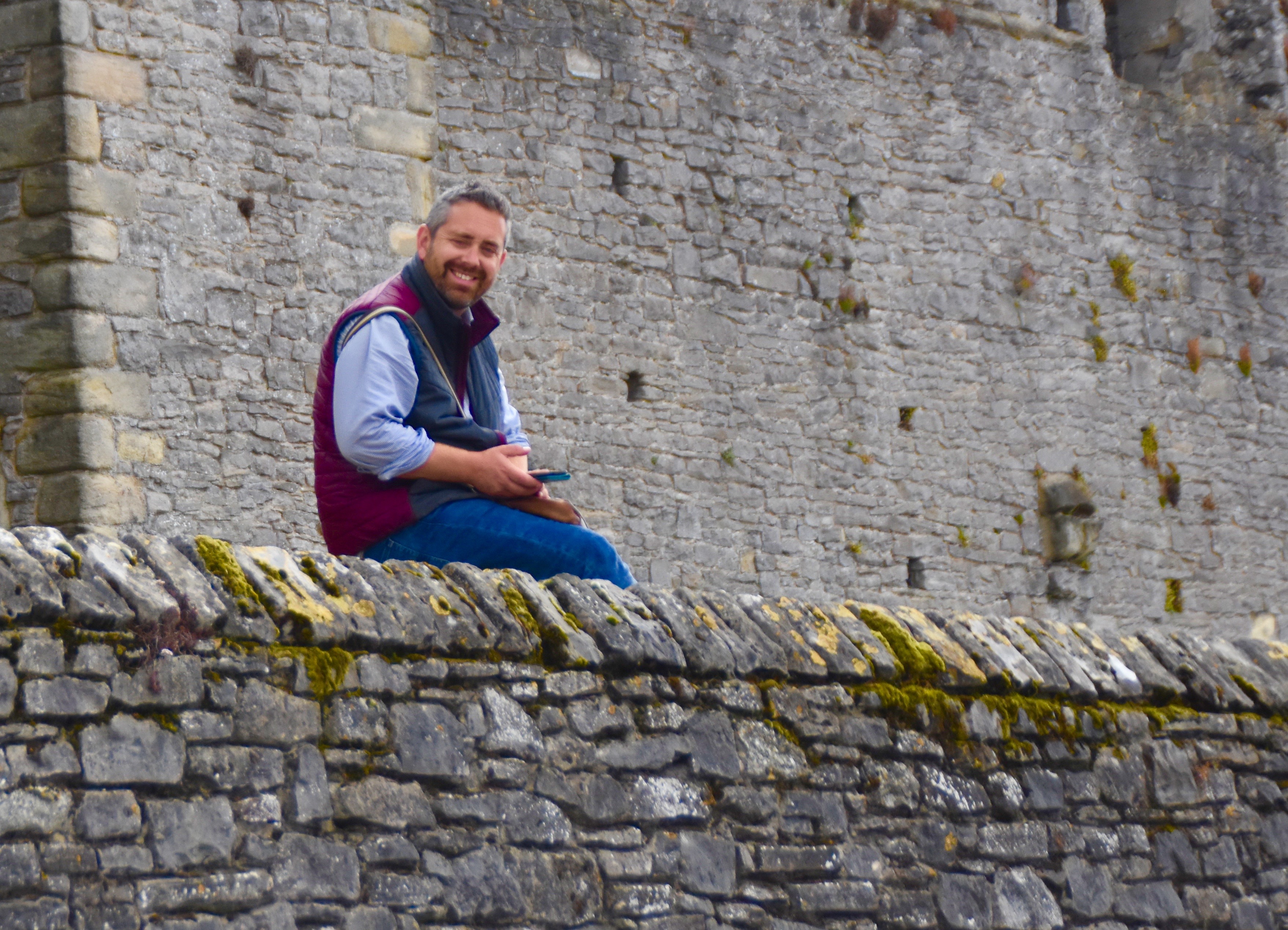
So without further ado let’s get on the bus with our driver Stewart who looks like he should still be in Eton or Harrow, but is actually a wizard at traversing the narrow lanes of the English countryside.

The Battle of Hastings – Previous Invasions
Prior to 1066 and the Battle of Hastings, Britain was one of the great pushovers in terms of a place to invade. Nobody really knows that much about the original inhabitants, the Celts, other than the fact that they were there when the first major invasion occurred in 55 B.C. led by none other than Julius Caesar. The Romans occupied and brought the country we now call England into Pax Romana for over 400 years – that’s as long as Europeans have been in Canada. After the Romans left in 410 it left the island relatively defenceless and that didn’t go unnoticed as invaders from Scandinavia and Germany took full advantage of the possibility of a land grab. Jutes from Denmark and more notably Angles and Saxons invaded with impunity. These were the people who transformed themselves from invaders into farmers, from pagans into Christians and from foreigners into Englishmen. Alfred the Great was the unlikely leader who preserved the English identity in the face of the next great invasion – the Vikings. These successors to their earlier invading brethren were not welcome, but did succeed in occupying large parts of Britain and right up until the Battle of Hastings, Norwegian invaders were still a menace.
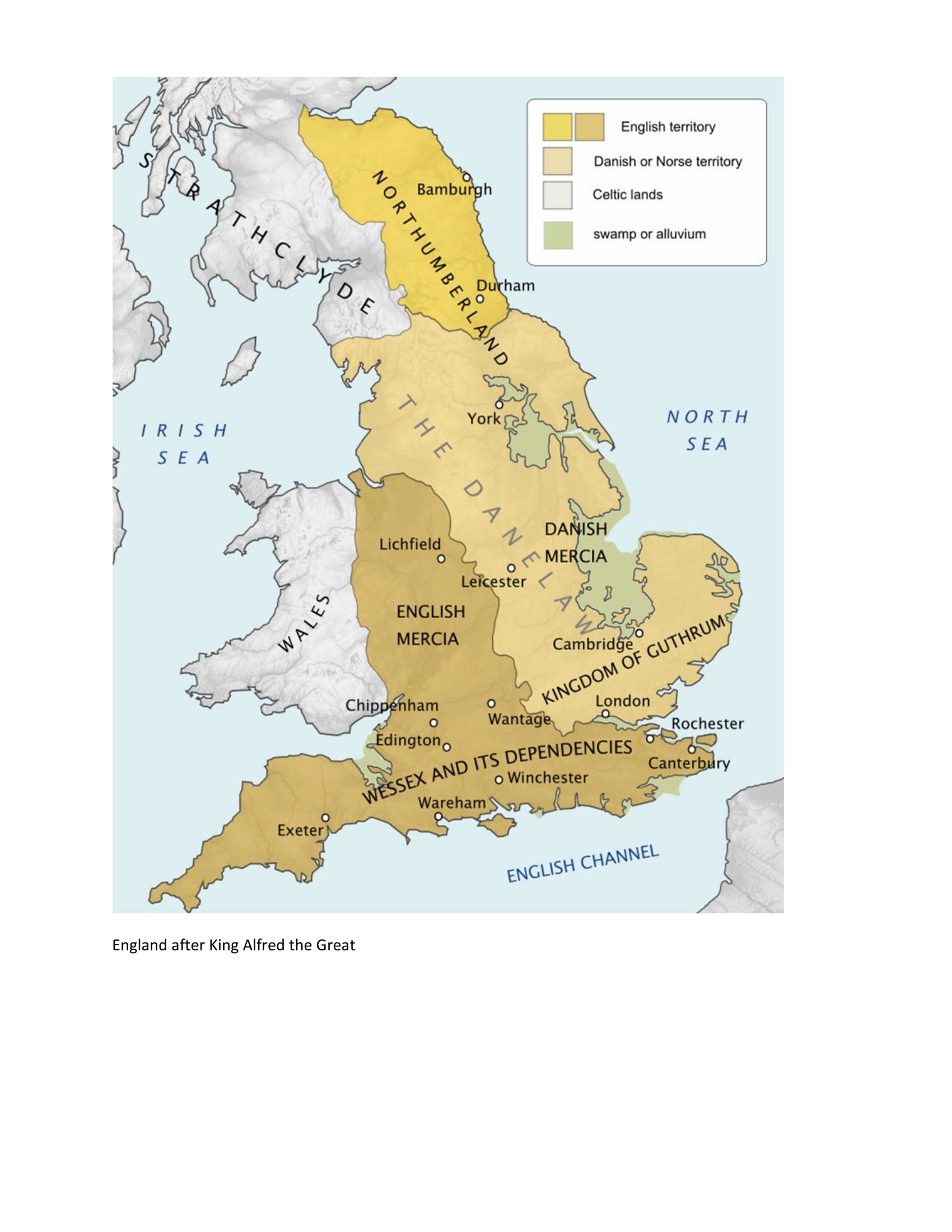
Finally, in 1066 there was one final successful invasion, also carried out by Vikings, but Vikings who spoke French and lived across the English Channel in Normandy – these were the Normans, a corruption of Norsemen or men from the north, aka the Vikings. Here’s why they decided to attack.
The Battle of Hastings – Background
One of the things I enjoy most about Liberation Tours is their tailor made background presentations, usually by Phil, that are given on the bus as we head towards the next important historical destination. In this case, our first of the trip, the town of Battle near the East Sussex coast where the Battle of Hastings took place (not in Hastings itself which is on the coast some seven miles away). Here is a summary of the information Phil gave us as we motored through the rolling hills of the Sussex Downs.
Almost every battle fought on English soil from Hastings to Bosworth Field in 1485 centred around one theme – contested claims to the throne. In the case of the Battle of Hastings there were multiple claimants starting with Harold Godwinson (Harold II) who was the actual choice of the people of England as represented by the Witan, a council of senior nobles and clergy. They had crowned him nine months earlier after the death of Edward the Confessor who left no direct heir. Half Saxon and half Dane, Harold would appear to have been a good and popular choice. He was also a very successful military campaigner having kicked the asses of the Welsh and later his unpopular brother Tostig in Northumbria.
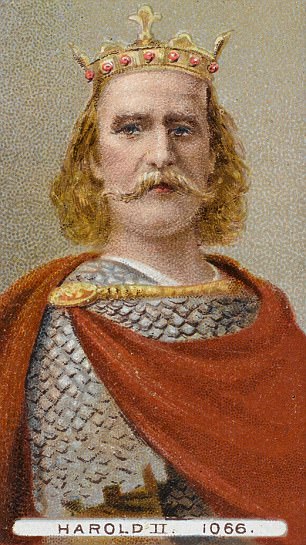
Contestant number two was another Harold – Harold Hardrada, also a very successful warrior with victories in Russia, the Byzantine Empire, Sicily, Bulgaria and maybe the Holy Land. The only problem was that he was king of Norway and had no real legitimate claim to the English throne. It was Harold II’s shit disturbing brother Tostig who invited Hardrada to claim the throne and he accepted the invitation.
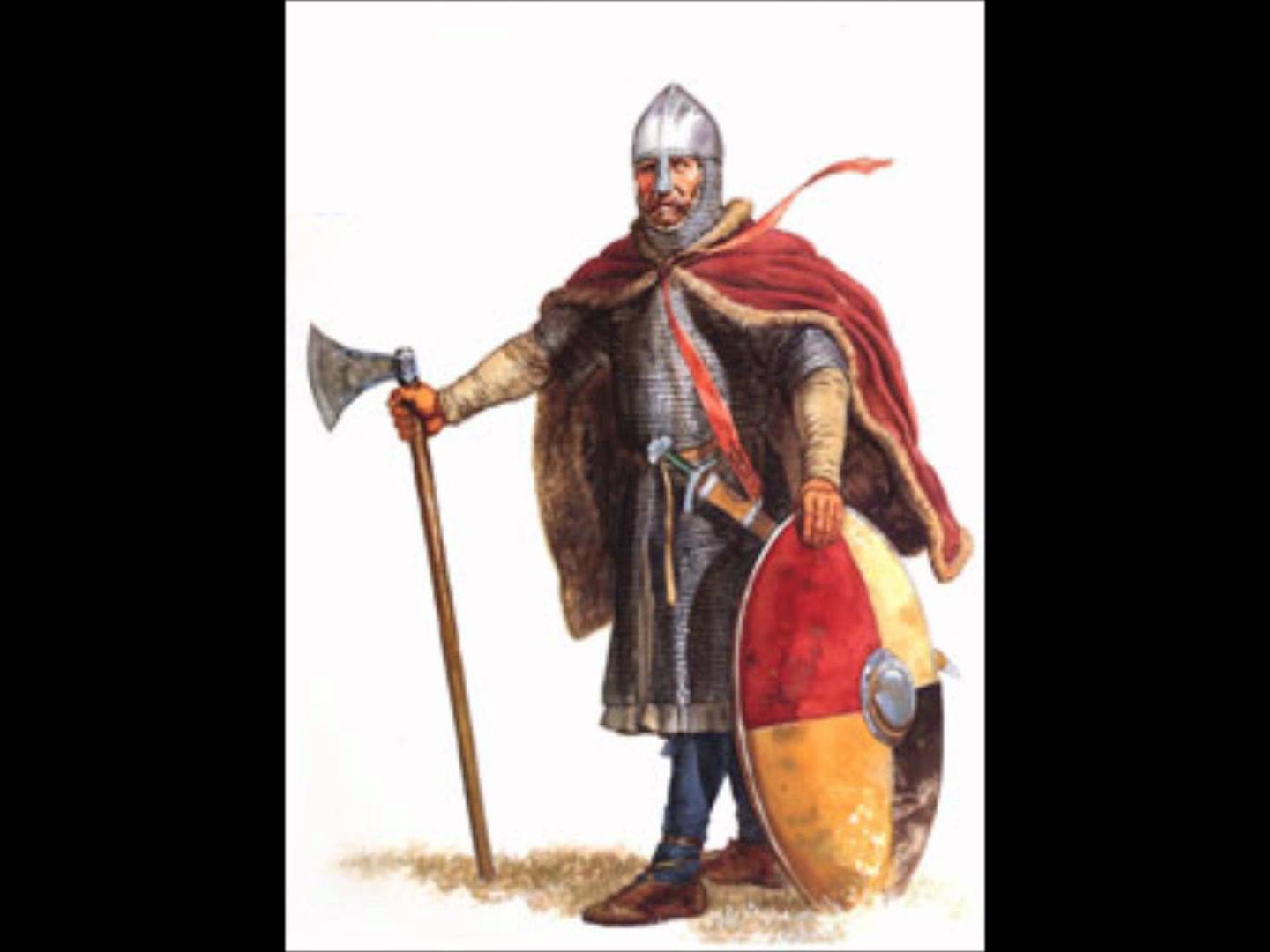
So Hardrada’s army landed in northern England, plundered like Vikings (Hardrada is often referred to as the last great Viking), won a few skirmishes and then met Harold II’s forces at Stamford Bridge, not the Chelsea football stadium, but a small town near York. Legend has it that there was a parlay before the battle in which Harold II approached his brother Tostig and Hardrada alone. Speaking to his brother in English which Hardrada didn’t understand, Harold offered to give Northumbria back to his brother if he switched sides. Tostig asked what Hardrada would get out of it and Harold replied ” Seven feet of English soil”, meaning enough space to bury him. Tostig refused.
The battle ensued and another great English legend was born. The English army had to cross narrow Stamford Bridge to get at their rivals and it was guarded by one single giant Viking who wielding a battle axe, cut down man after man, performing his own version of Horatio at the bridge. Only after a quick thinking Englishman floated under the bridge in a barrel and drove a spear up from below, killing the valiant Viking, were Harold’s troops able to engage the enemy. Hardrada was killed by an arrow to the throat, his army thoroughly whipped and the remnants sent fleeing back to Norway. Treacherous Tostig also got his due – slain on the battlefield. Here is a 19th century romanticized version of the Battle of Stamford Bridge.
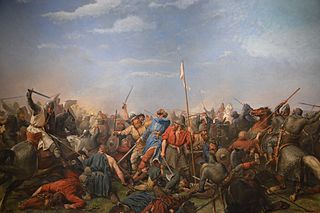
So Harold II successfully resisted one invasion, but like whack-a-mole up pops another claimant, William, Duke of Normandy who would soon be called William the Conqueror.
William the Conqueror
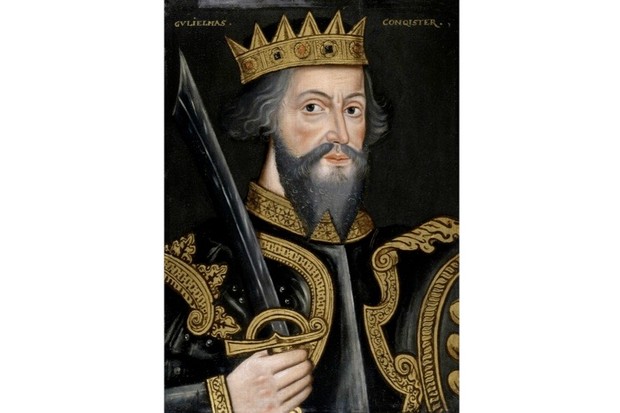
The first thing to know about William is that he was a bastard, literally. The son of Robert, Duke of Normandy and his mistress Herleve, daughter of a tanner, William was the last person you would think could end up making a claim for the English throne, but he did and here’s how. Robert, like so many other kings and nobles who could produce bastards by the dozen, couldn’t beget a legitimate male heir to succeed to the title. When Robert died he left the title to a young William by will. This did not make the other legitimate Norman barons too happy and four successive guardians were murdered in attempts by various nobles to get their hands on William and dispatch him. But, he was a survivor and eventually crushed all opposition. By 1066 he was a seasoned warrior and commanded respect and loyalty from his fellow Normans.
William’s claim to the English throne was based on two alleged promises made to him, one by the English king, Edward the Confessor and the other by Harold II of all people. Edward was a cousin of William’s who has spent time in Normandy during a period of exile and apparently they did have a friendship. In 1051 William popped over to visit Edward in London. At the time Edward had no successor and according to William, told him that if he didn’t have one by the time he died then William could have the title. Sounds bogus, but who is to know. Of course, Edward was spending more time confessing his sins than committing them so he died without a male heir.
The second promise was even more dubious. Poor Harold II got himself shipwrecked on the Norman coast and became William’s ‘guest’. Knowing Harold II was a possible contender for the English throne, William would not let him leave until he swore on the Norman equivalent of a stack of bibles, to support William’s claim. This oath, clearly made under duress and probably with Harold’s fingers crossed behind his back, became the pretence for the most significant invasion in British history.
The Battle of Hastings – Touring the Battlefield
With this background material provided by Phil we are all pumped to get out and tread the ground where William wrested the throne from Harold II.
The actual site of the Battle of Hastings and Battle Abbey is administered by the not for profit organization English Heritage which is in charge of almost four hundred of England’s major tourist attractions including some we will be visiting like Stonehenge and Hadrian’s Wall. If you are planning to visit more than just a few of England’s major historic sites it makes sense to buy an annual membership for £56 which provides free admittance to all the sites. The cost of a single entry to most of these sites is over £10 (Stonehenge alone is £17.80), so there’s a lot of money to be saved. Liberation Tours all of the entry fees are included in the tour cost. Mark precedes us into the ticket area and a few minutes later back with tickets and audio tour gadgets for all of us.
In the meantime we pose for our first group photo at the entrance gates.
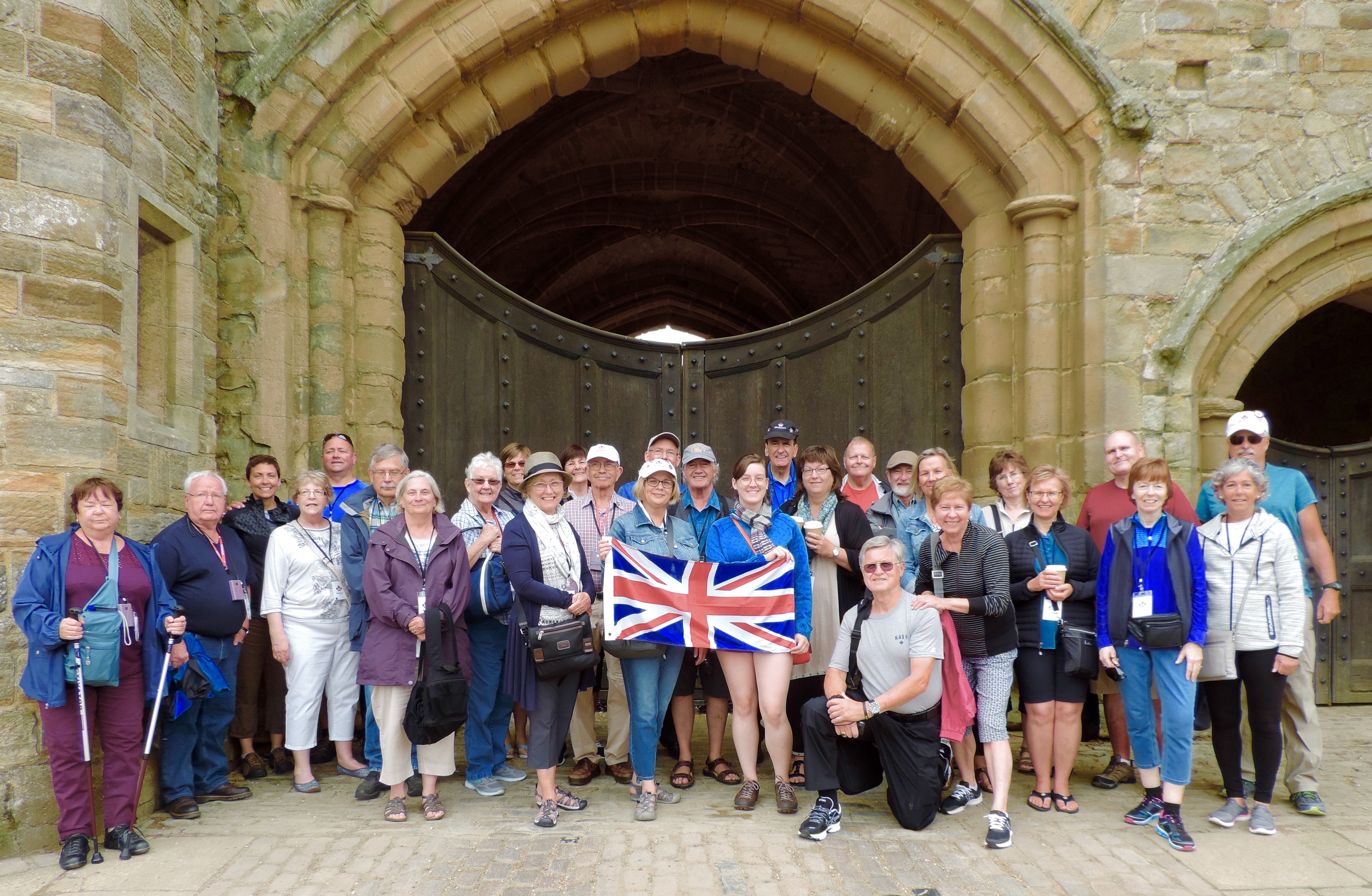
There are two components to this visit. The first is a walking tour of the battlefield with an audio guide and the second is a tour of the ruins of Battle Abbey which William had built on the site to commemorate his victory. There is an abridged version of the walk, but unless you are really mobility restricted, take the longer walk. It will take anywhere between an hour and an hour and an hour and a half if you stop at all the suggested spots.
Here is a map of the Battle of Hastings with the modern structures included. You enter through the gate house, go to the visitor centre first and then walk around the battlefield in an anti-clockwise direction.
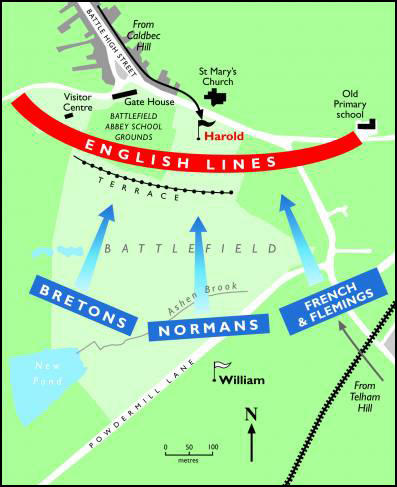
Once you are on the actual battlefield you can see that the English occupied a very strategic position on the high ground and that William’s forces would have to fight an uphill battle (literally) to win the day. This despite the fact that the Normans had landed in England over two weeks before and Harold had had to march his army all the way from northern England after the victory at Stamford Bridge on September 25. The date of the Battle of Hastings was October 14 so Harold’s troops had to be exhausted.
Here is the view from the English position looking down to where William’s forces were positioned at about the line of trees.
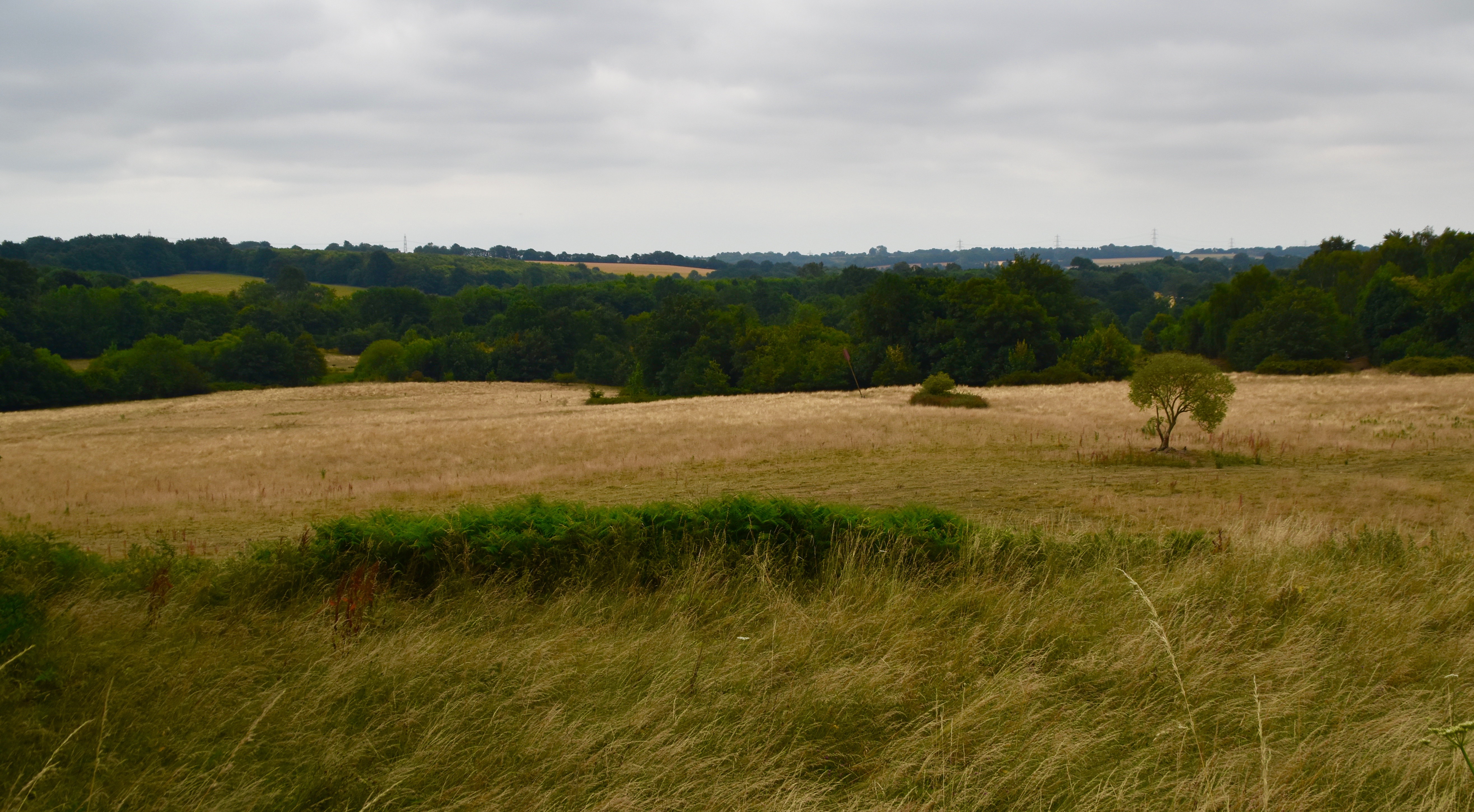
Given Phil’s pretty detailed description of events leading up to the Battle of Hastings we don’t learn much new at the Visitor’s Centre, but do get a close up look at some of the weapons used in the fight. The one thing I do learn is just how bloody heavy chain mail is. I cannot imagine trying fight while encased in a suit that weighs sixty pounds.
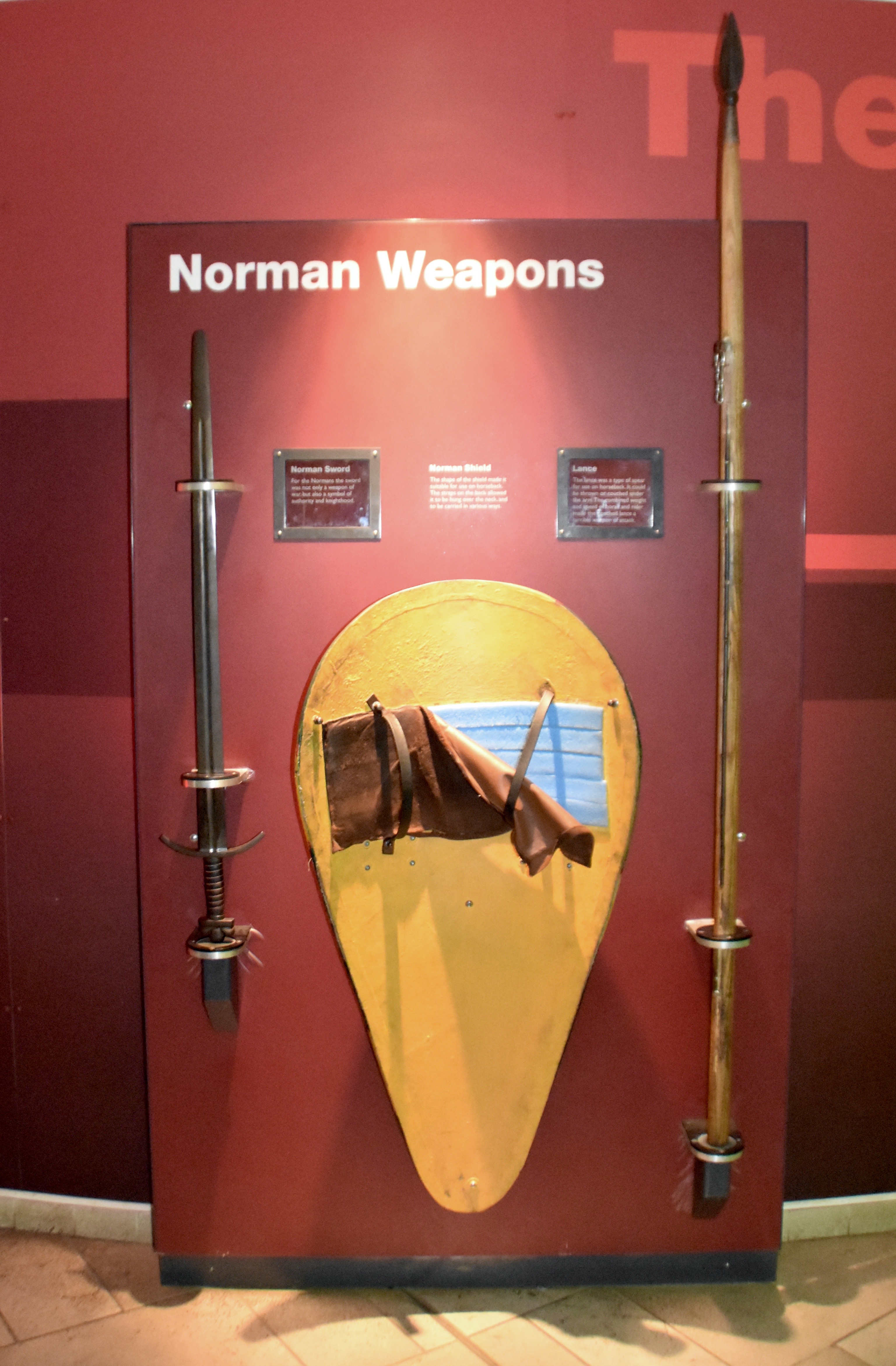
Scattered around the Battle of Hastings walk are numerous wooden statues depicting various fighting men including this one who tried to brain Alison.
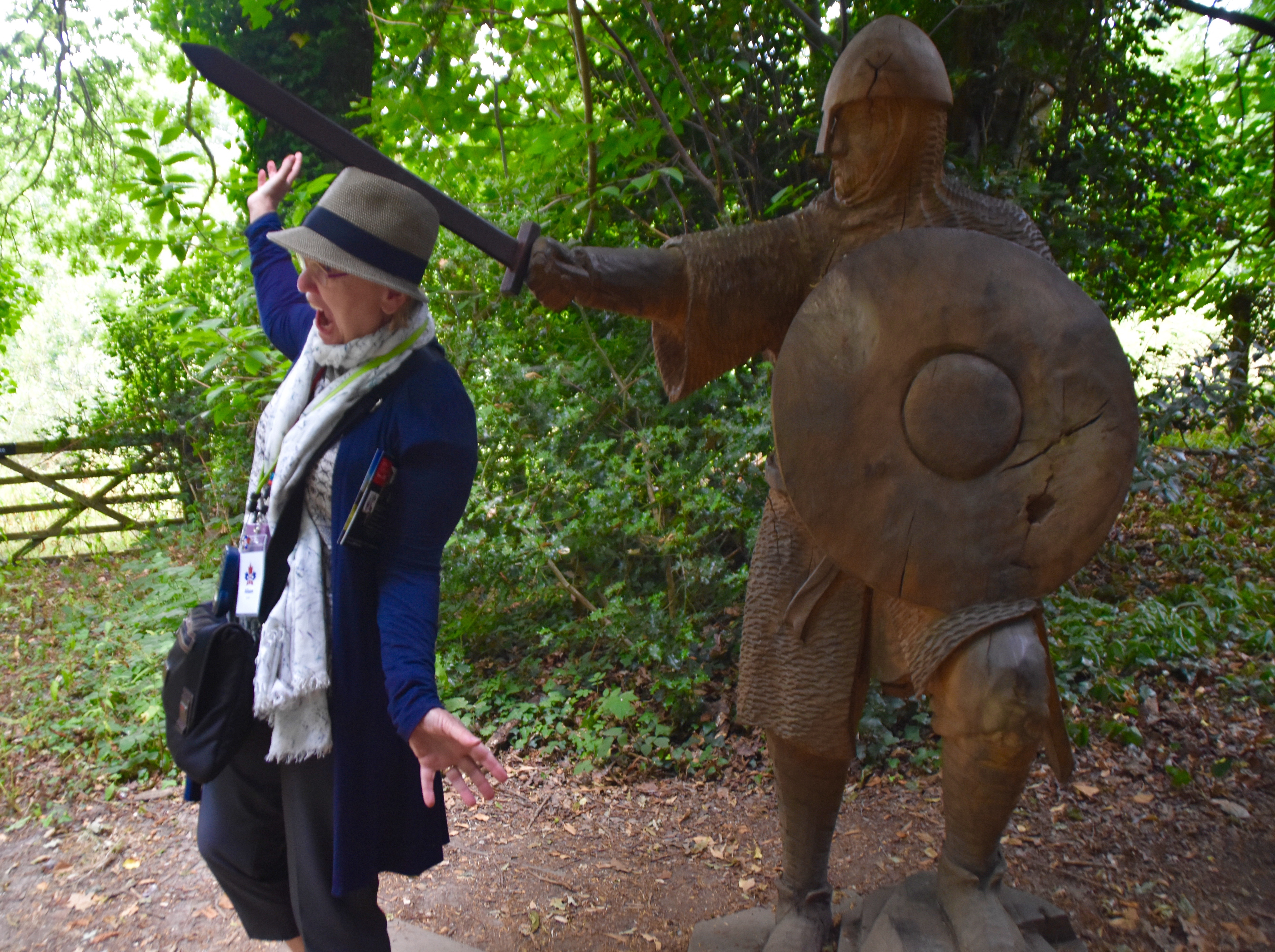
Most of the battlefield area is home to many sheep who leave their droppings everywhere making walking a bit of an exercise in avoiding sheep shit. They could care less; this is their home.
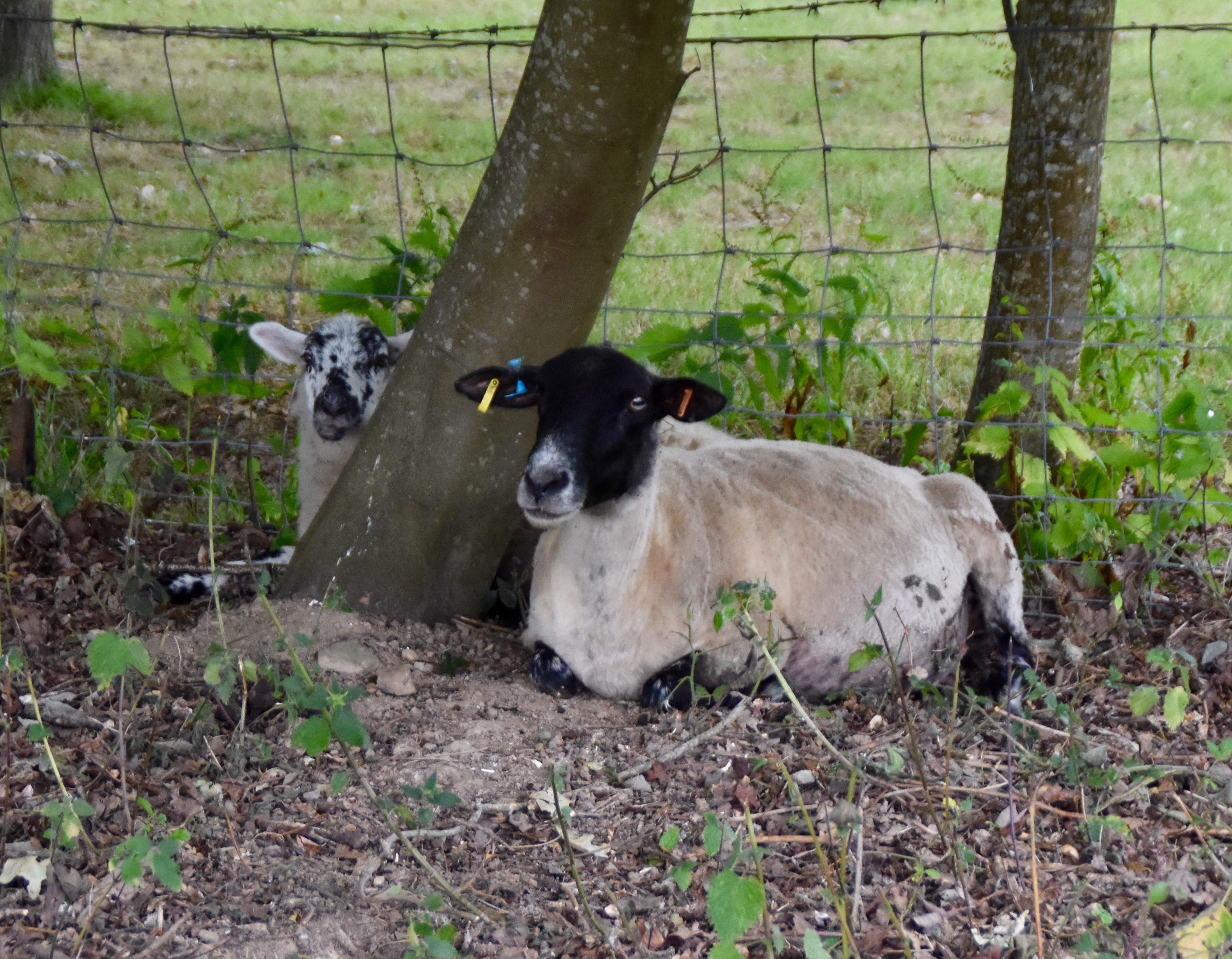
Each audio stop is numbered and provides detailed information on the progress of the battle which starts with a complete rout of Norman forces as they rashly try a direct attack up the hill at the English forces. This photo gives some perspective as to just how steep the hill is in some places.
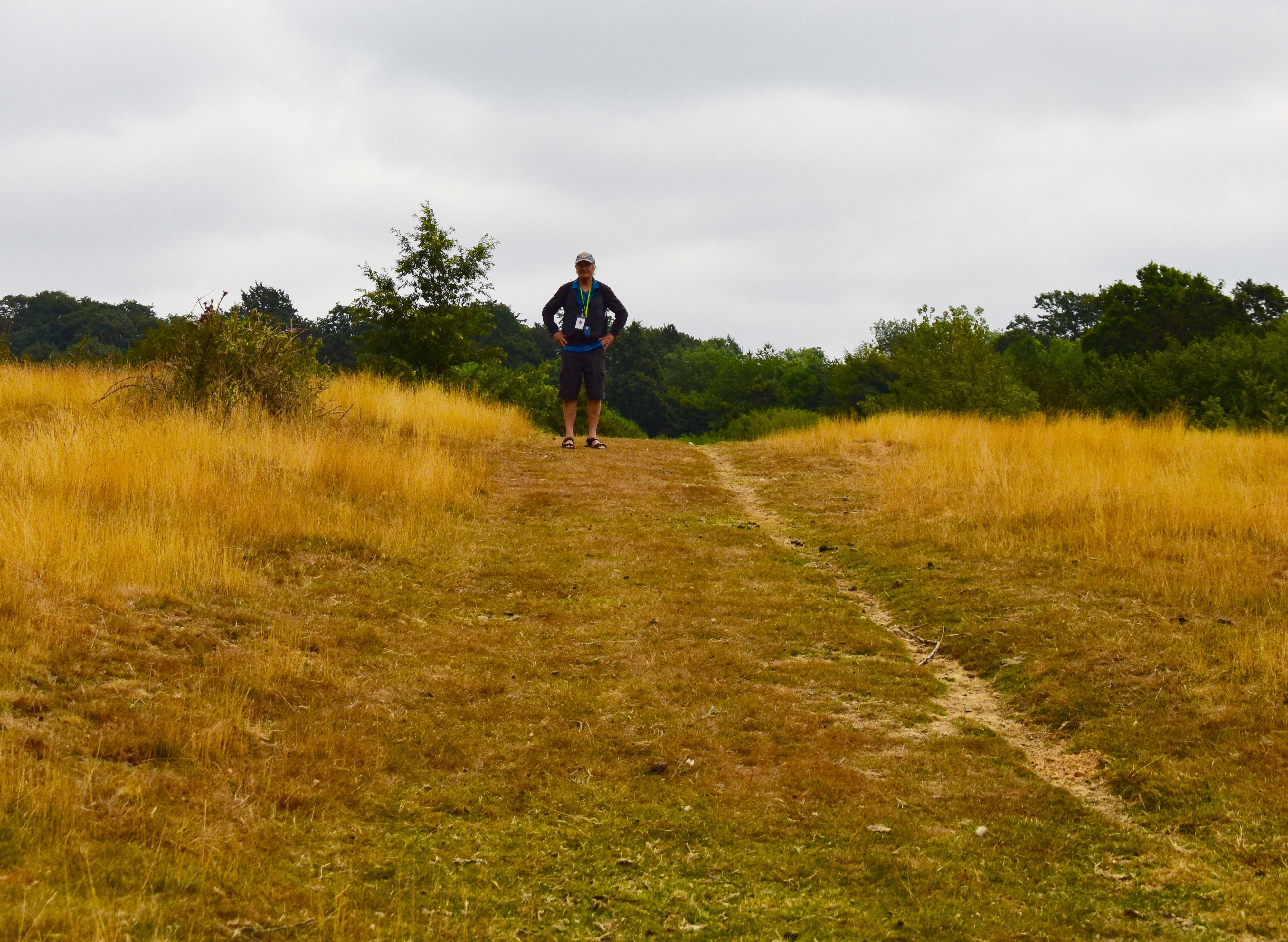
Clearly a direct assault won’t work as long as the English stand firm in their position, so William tries an old ruse that shouldn’t work, but in this case does. The Normans again approach, but this time instead of an orderly retreat they pretend to flee in panic which sucks a number of the English troops to break ranks and chase them. The Normans then abruptly stop running, turn around and entrap the pursing English cutting them down almost to a man.
With the English line weakened Norman archers manage to get close enough to inflict major damage. You can see that the Normans have now advance well over half way up the hill.
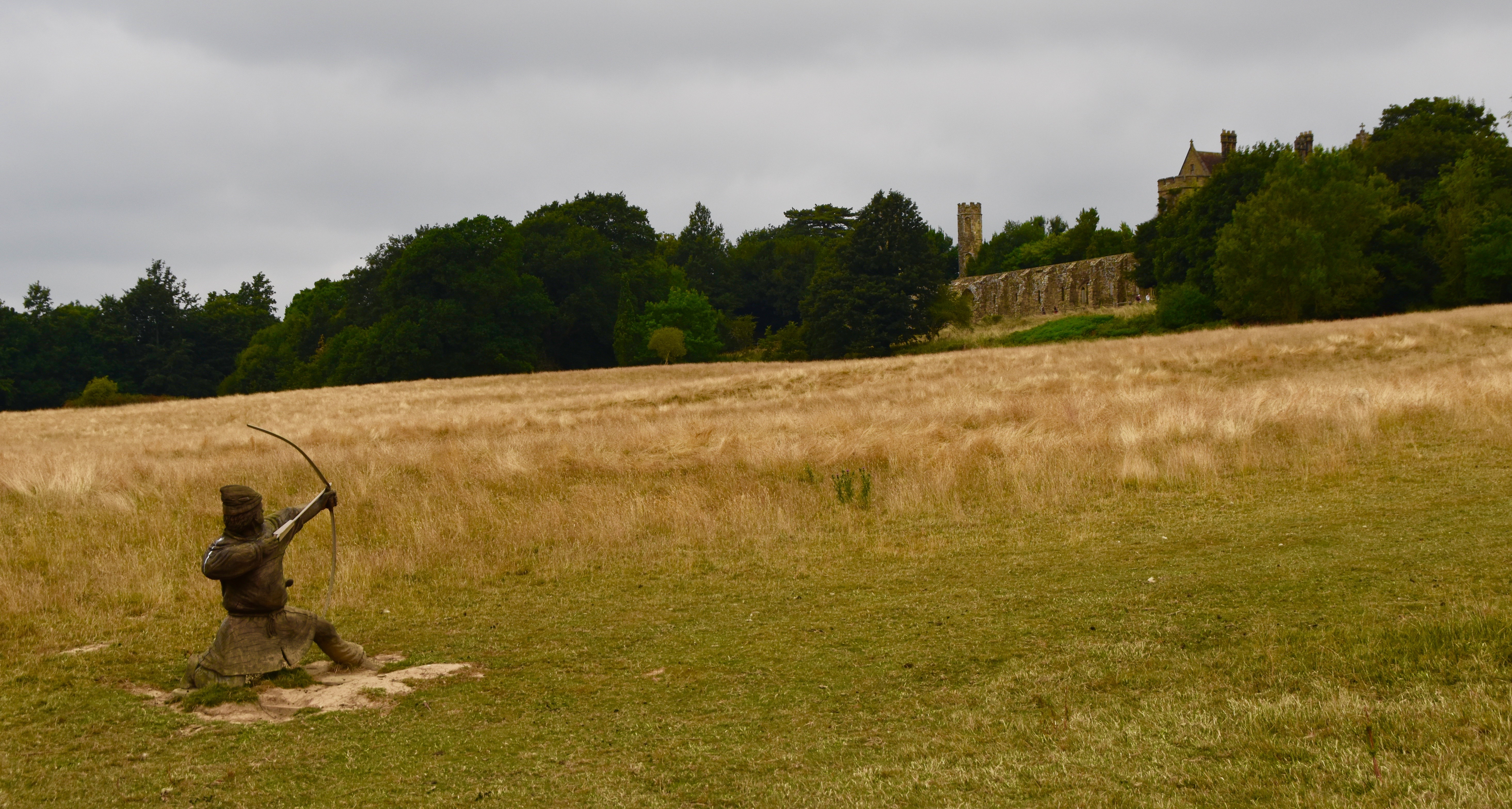
Then disaster struck the English side – Harold was hit in the eye with an arrow and killed. Leaderless (two of Harold’s brothers had already been killed), the English crumpled and the Norman’s won the field and with it the throne of England.
This tablet at the top of the hill allegedly marks the very spot where Harold was killed – unlikely, but hey, he had to die somewhere.
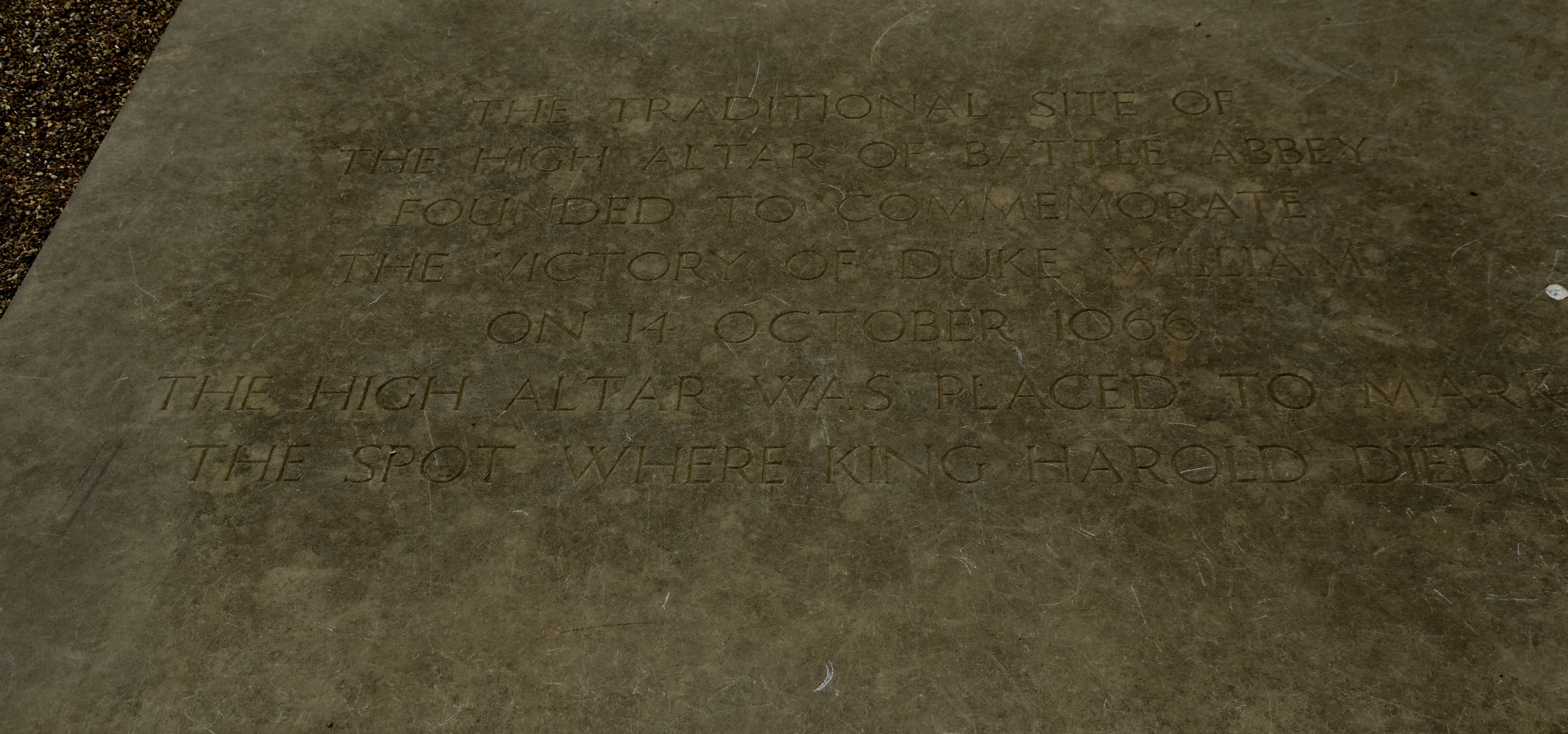
By now the walk will have taken you back up the hill to the entrance to Battle Abbey.
Battle Abbey
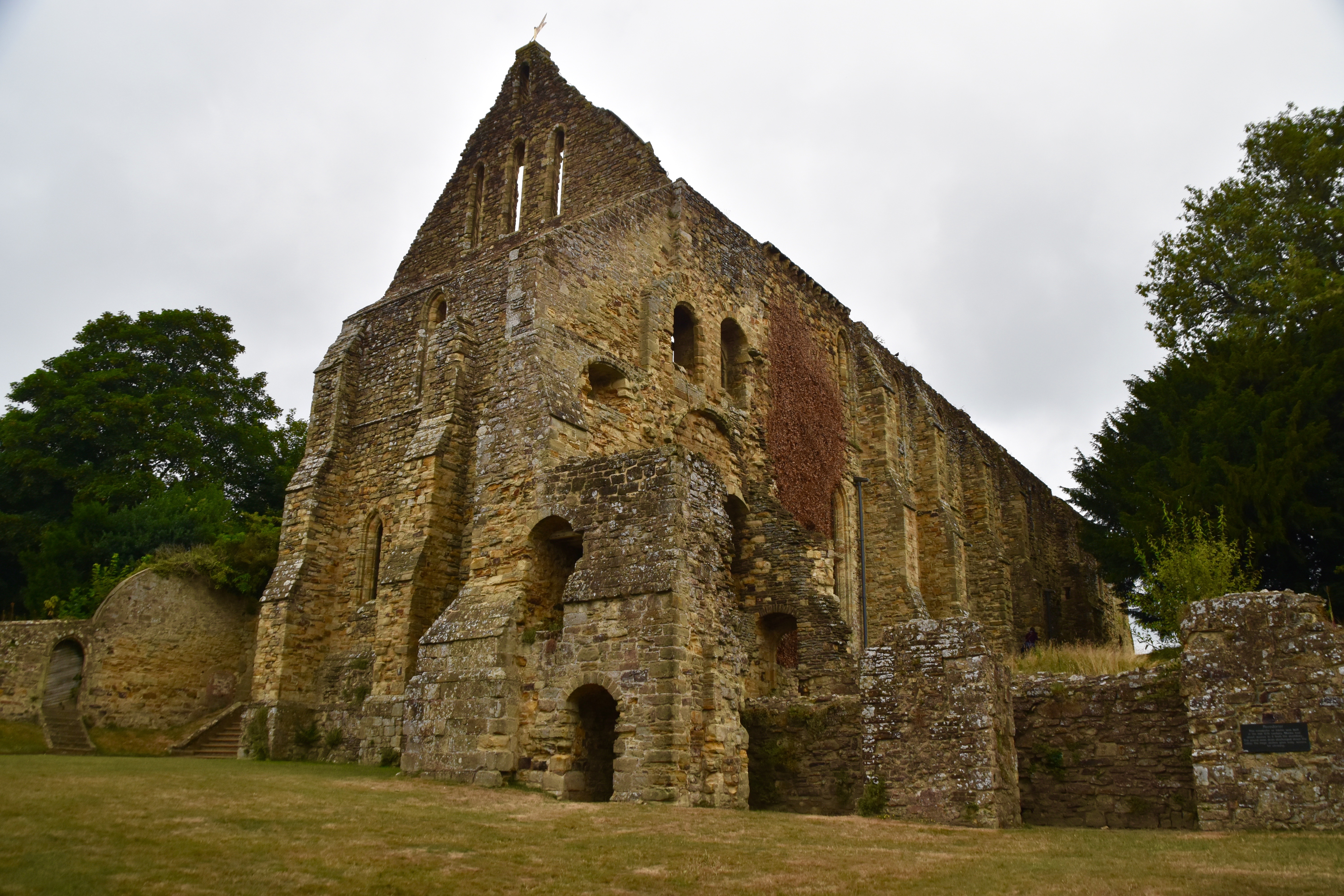
Pope Alexander II, apparently feeling really bad about how many people the Normans killed in their conquest ordered them to build, guess what – an abbey, as penance for all the slaughter which William obeyed and Battle Abbey was the result. Now a grand ruin thanks to Henry VIII’s dissolution of the monasteries, it’s still an awesome place to walk around. For some reason I find ruins almost as interesting as buildings that still have roofs. Without the roof and the interior decoration you get more light and can appreciate why this combination of late Romanesque/early Gothic architecture is so impressive.
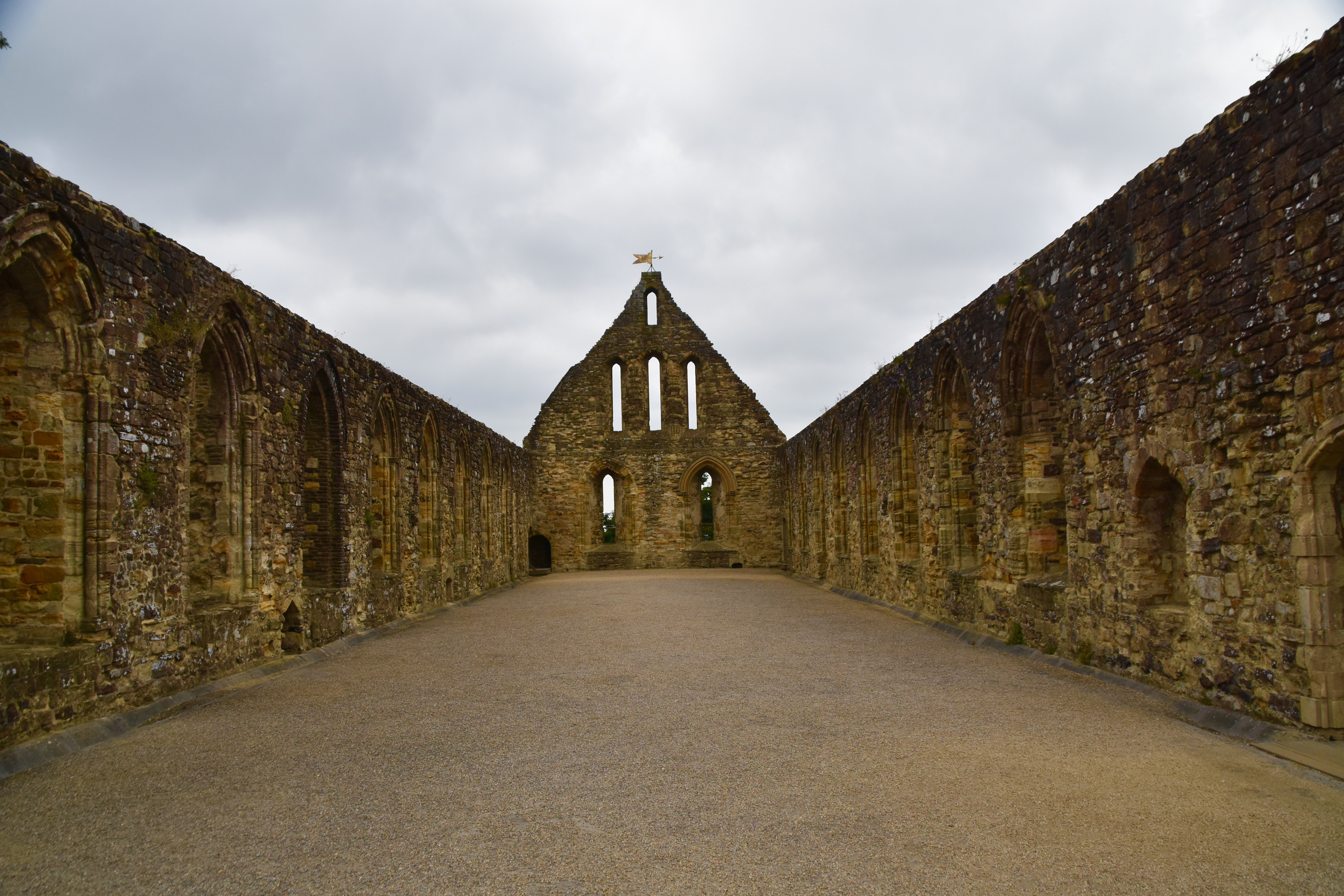
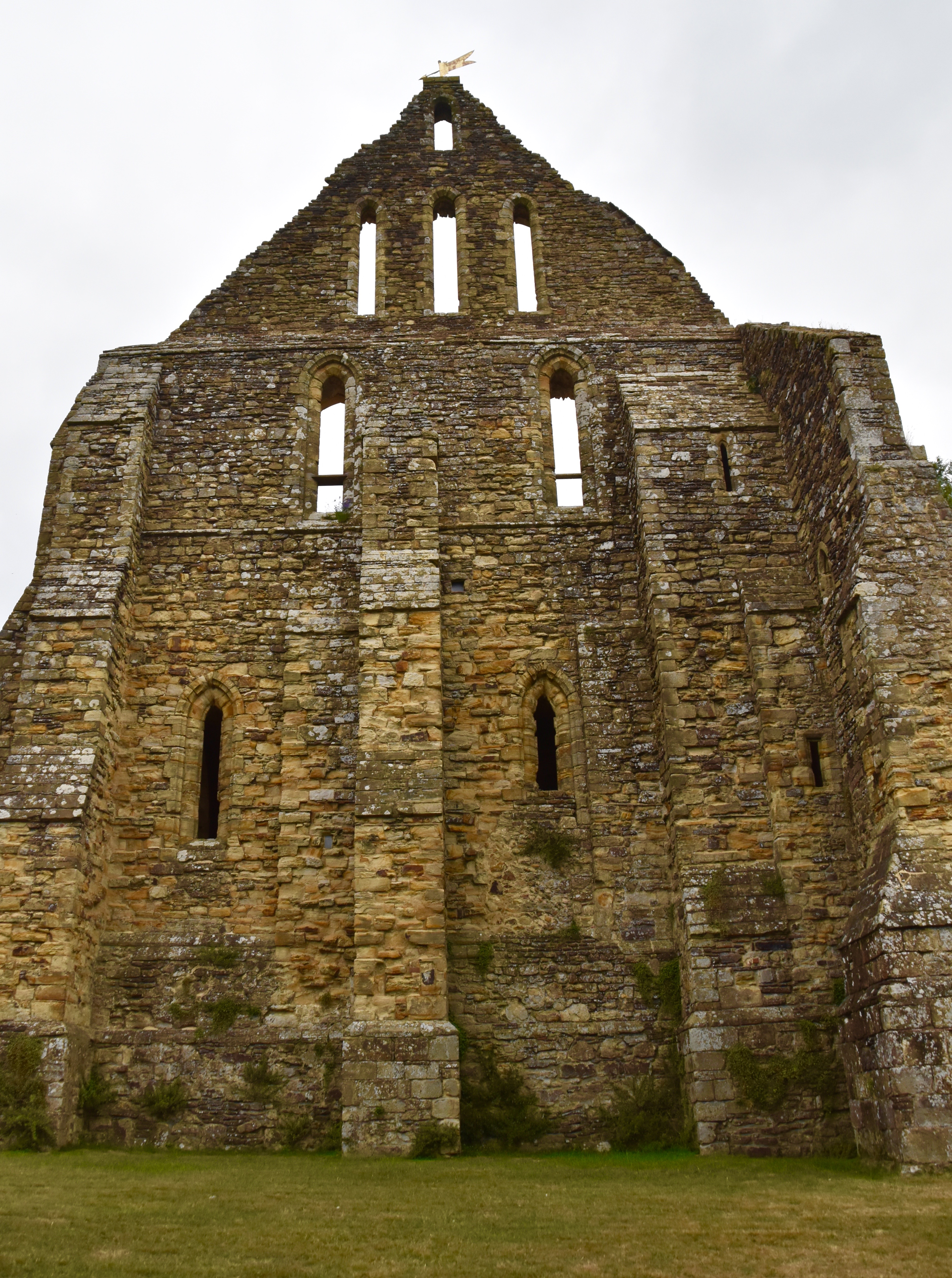
In areas that still have ceilings the vaulted arches are equally impressive.
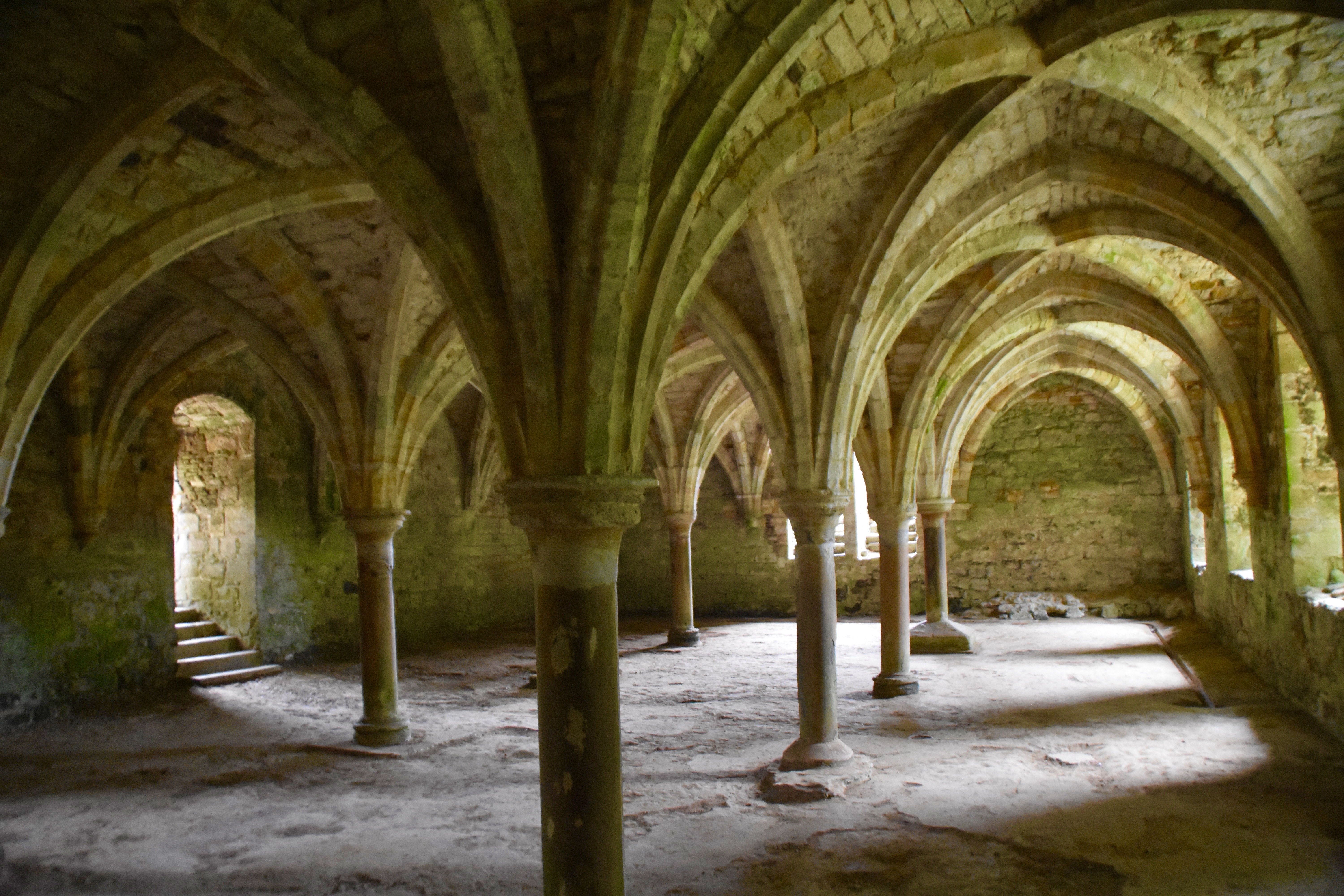
After visiting the abbey you will want to walk a portion of the abbey walls that still separate the town from the abbey grounds. There is a surprisingly steep drop from the walls to the street below.
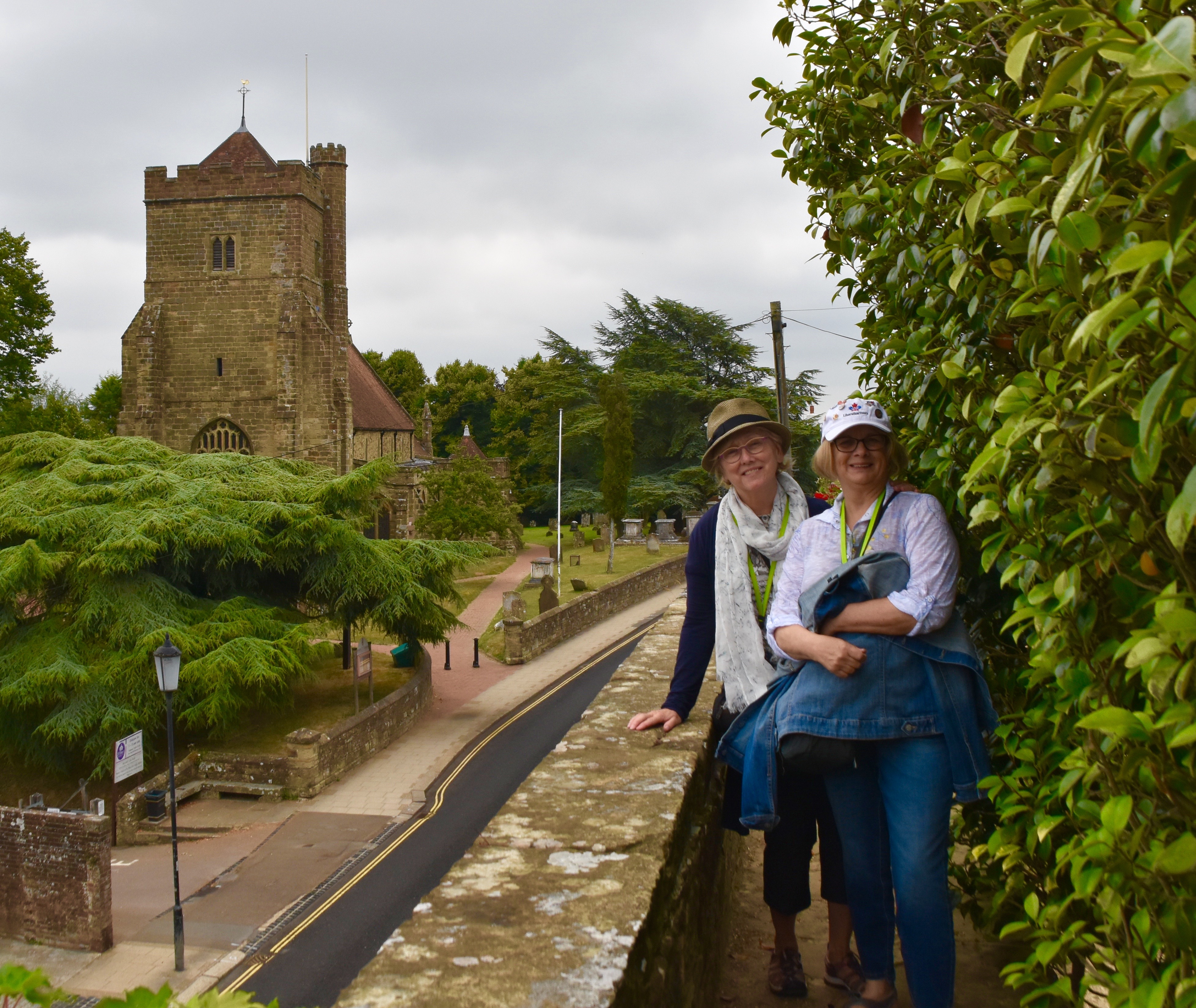
The final stop is to climb the stairs of the Abbey Gatehouse for a grand overlook of the Battle of Hastings battlefield.
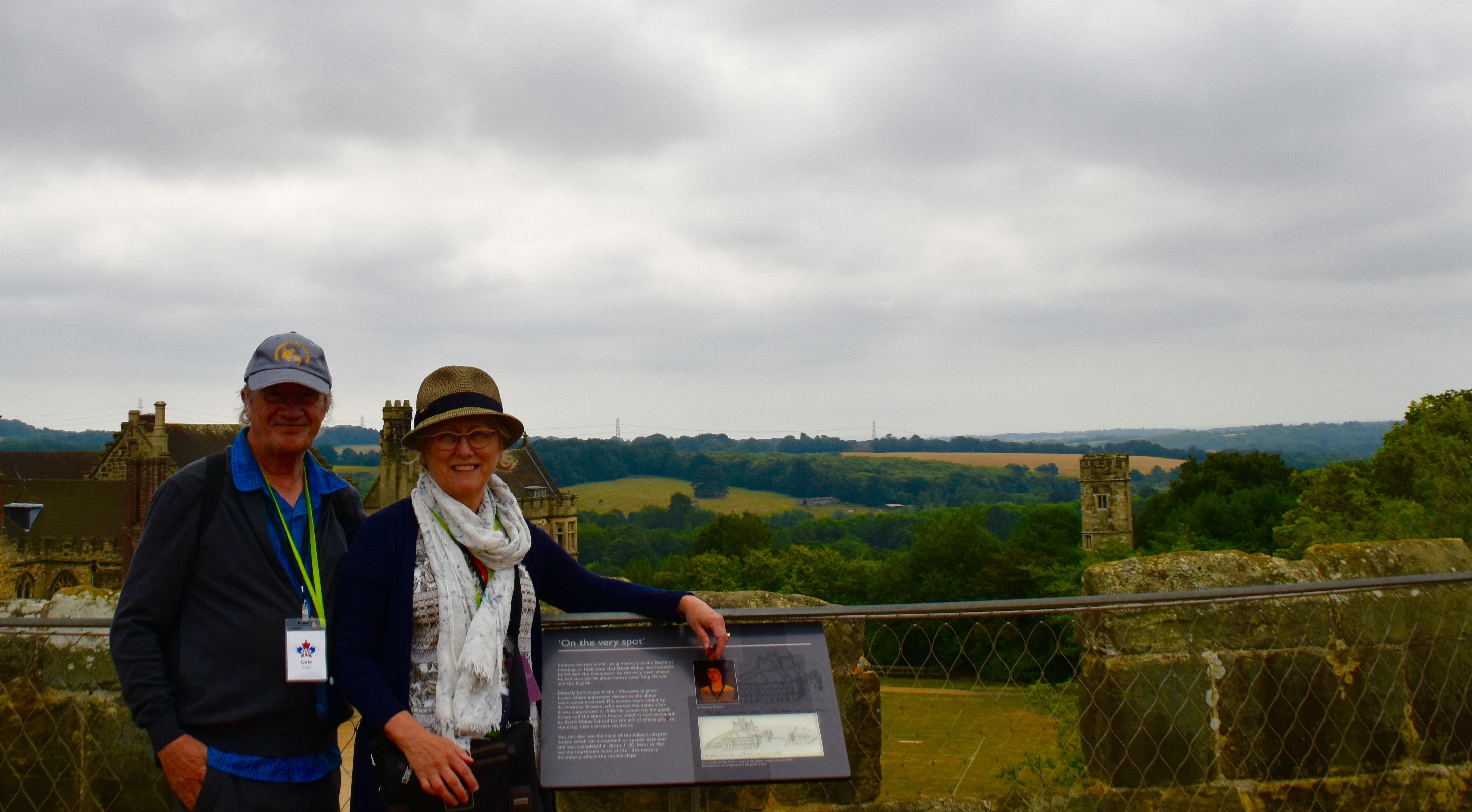
Inside the gatehouse are more exhibits and I could not pass up the chance to don this Norman helmet. Do I look like a Viking berserker?
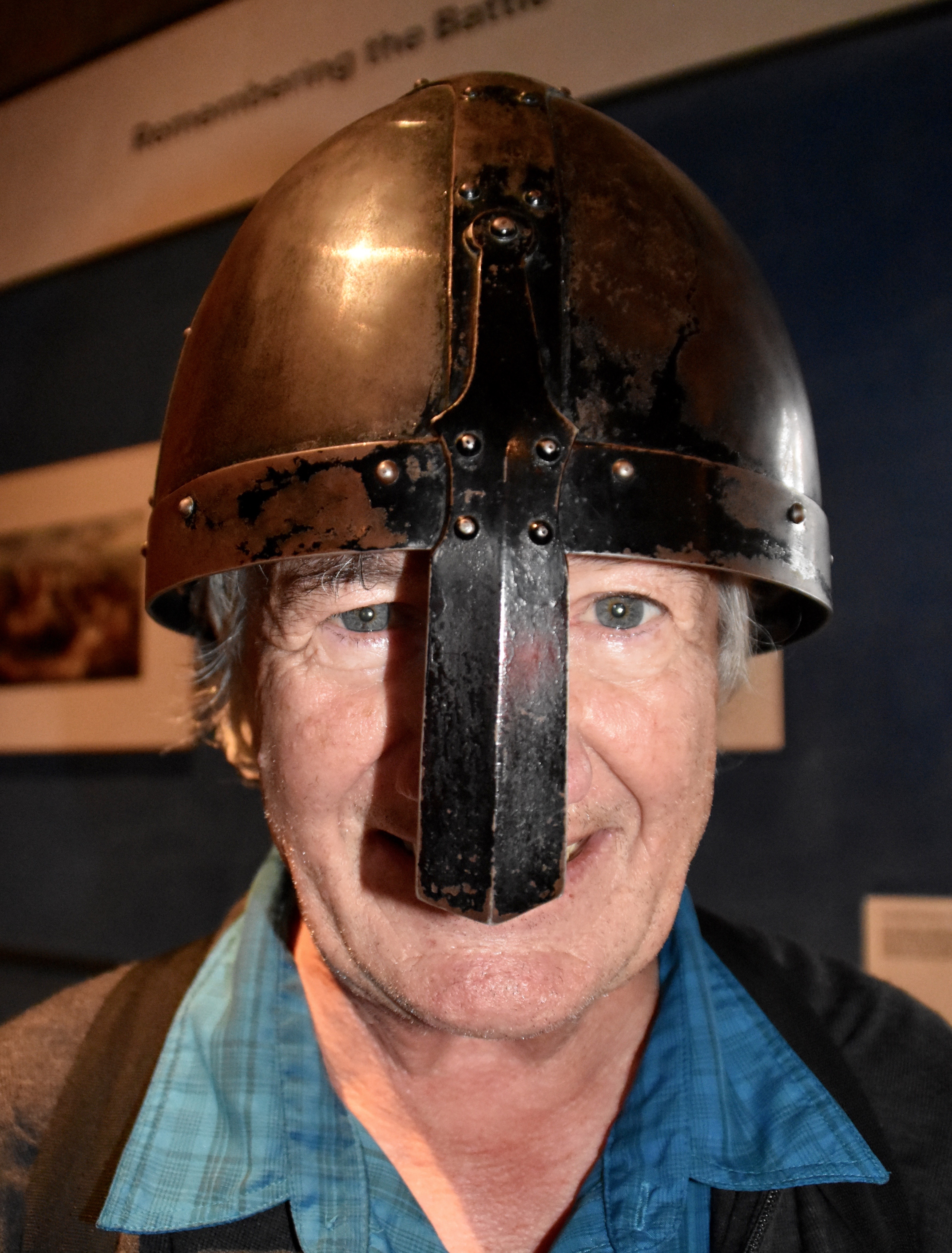
With that we end our first stop on the Liberation Tours Medieval Britain tour. If the rest of the stops are half as interesting as the Battle of Hastings, the trip will be a great success. I’ll keep you posted.
PS I do know that technically there were invasions from Scotland from time to time and that the Glorious Revolution of 1688 resulted in a foreign king taking over the throne, but none of these were true invasions in the sense of the Battle of Hastings which brought an entirely new ruling class to England.

